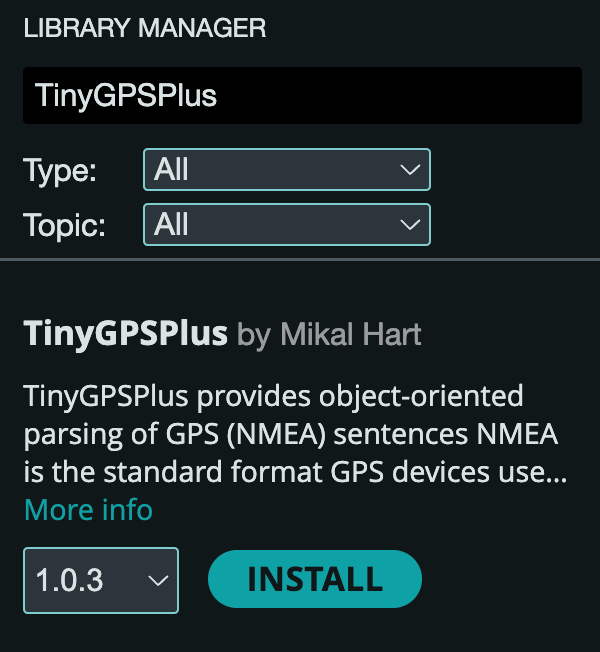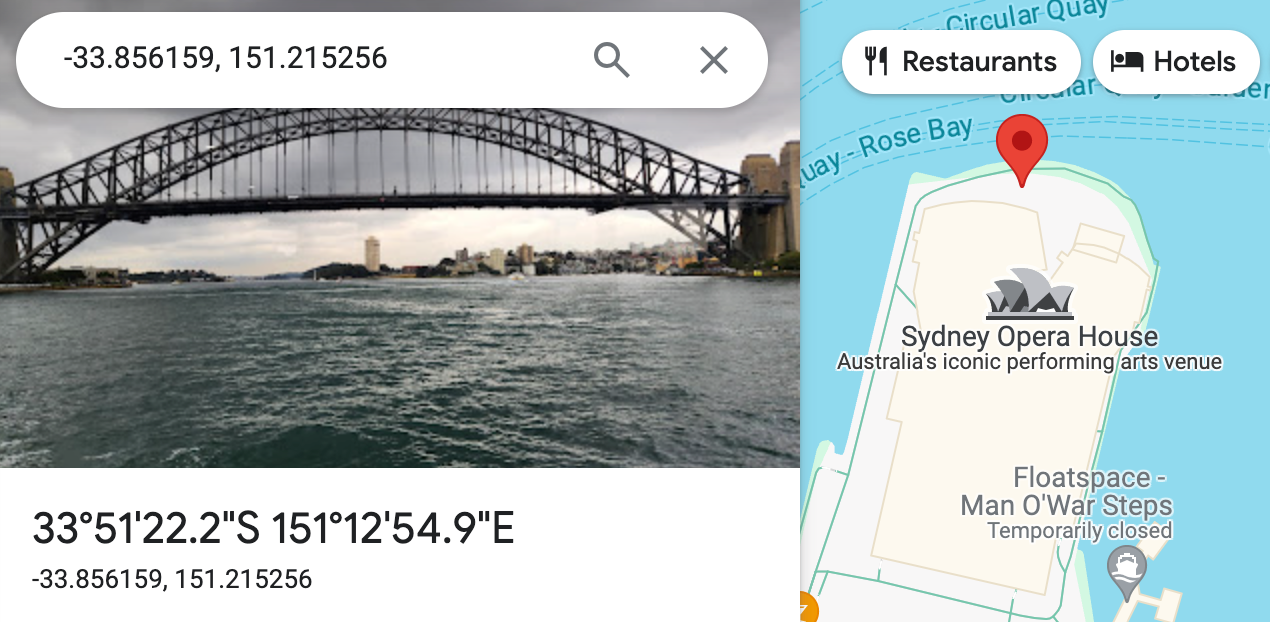Table of Contents(5)
Overview
From the previous experiment, we learned how to read NMEA data from the software serial. In this experiment, we will use TinyGPS++ to parse the GPS data. TinyGPS++ is a simple GPS library that can parse NMEA data, extracting useful information.
Components and Supplies
Wiring
| # | GY-NEO6MV2 | Arduino UNO R3 |
| 1 | VCC | 5V |
| 2 | GND | GND |
| 3 | TX | 2 |
| 4 | RX | 3 |
Library

TinyGPSPlus
Search for TinyGPSPlus by Mikal Hart in the library manager on Arduino IDE, and install this library.
Installing a library is a straightforward process that can be done swiftly. To begin, launch the Arduino IDE. Once the editor is open, direct your attention to the left column. Here, you'll notice a few icons. Locate and click on the "library" icon. Instantly, a comprehensive list of all the libraries at your disposal will materialize. You also have the option to search for a specific library. Once you've identified the desired library, simply click on the "INSTALL" button, and the installation process will commence.

Code
Result
After successfully receiving GPS signals, the GPS module’s LED light starts blinking. Open the serial monitor, set the baud rate to 9600, and then we can see the parsed GPS data.
After obtaining the GPS latitude and longitude, we can copy it to Google Maps or Baidu Maps to search and view the location.


1 thought on “Decoding NMEA Data with TinyGPS++”
Ezra
this is a very nice tutorial, straight to the point! I have one question. You have shown how to decode NMEA sentences to obtain latitude, longitude, date, and time, I was hoping you could show how to obtain altitude values. Which function decodes the altitude values?